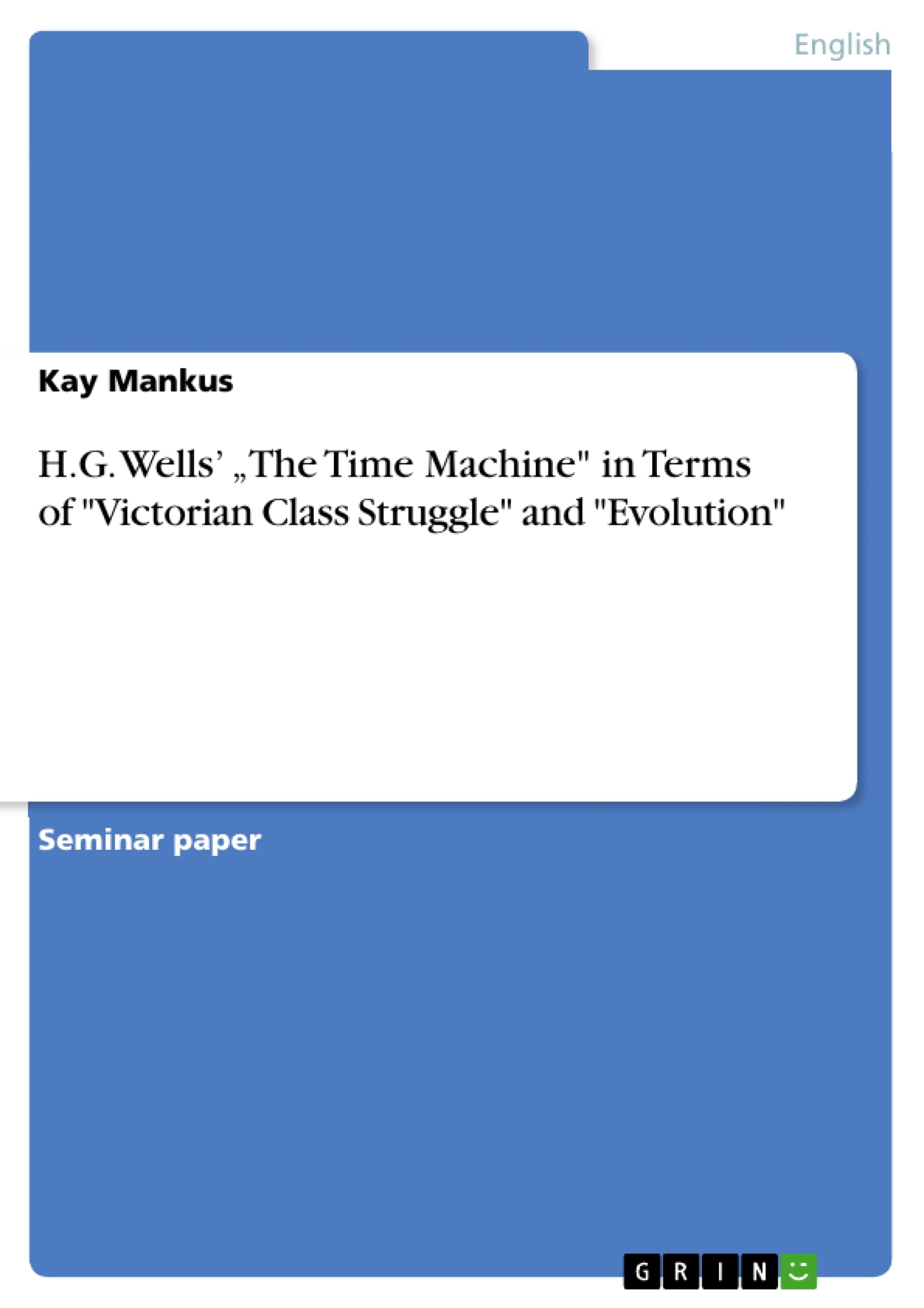1. Introduction
In this paper, I am going to explore the concept of evolution in H.G Well’s "The Time Machine”. This enormously successful and influential novel, first published in 1895, has been made into two movies in the twentieth century. The novel is generally credited with the concept of time travel using a vehicle which allows the user to explore the fourth dimension by going forward or backwards in time. On another level it is a critical view of the late nineteenth-century Victorian society, and an early masterpiece of dystopian writing. Historically considered, it is one of the first science fiction writings ever published. Wells himself called his work “scientific Romance” and the majority of reviewers at the time used the term, too. “The Time Machine” was later seen by literary historians as having laid the path for modern science fiction writing. Moreover, the novel utters a sharp criticism of the decadence of the bourgeoisie and provides a critical perspective on the growing gap between upper and lower class in Wells’ own time. The main themes and leitmotifs are very ambiguous. The plot illustrates how a typical utopian paradise turns into a dark dystopian vision of a remote future for mankind.
In the first part of my paper, the focus lies on the novel’s structure as well as on the specific literary devices employed. This includes the narrative frame, interesting aspects of the narration and the protagonist, who is simply, yet amply named “The Time Traveller” and an overview of the extraordinary structures of time and place....
Inhaltsverzeichnis (Table of Contents)
- Introduction
- Literary structure
- Function of the Narrative frame
- The Narrators
- The Protagonist: Time Traveller
- Structure of Time and Place
- Historical Background
- Eloi vs. Morlocks image of a late nineteenth-century class struggle
- Eloi and Morlocks - Failures of Evolution?
- Social Darwinism
- Summary
- Bibliography
Zielsetzung und Themenschwerpunkte (Objectives and Key Themes)
This paper aims to analyze H.G. Wells' "The Time Machine" by exploring the concept of evolution within the context of Victorian society. The work is considered a pioneering piece of dystopian science fiction, offering a critique of the class divide and decadence of the Victorian era. The novel's ambiguous themes and leitmotifs contribute to its enduring impact.
- The role of the narrative frame in establishing the story's setting and credibility
- The portrayal of class struggle and social Darwinism through the Eloi and Morlocks
- The relationship between the novel's structure and the concept of time travel
- The implications of Wells' work for the development of science fiction
- The enduring relevance of "The Time Machine" for post-modern readers
Zusammenfassung der Kapitel (Chapter Summaries)
The introductory chapter sets the scene for the story, introducing the Time Traveller and his groundbreaking concept of time travel. The narrative frame is established, providing a grounding in late nineteenth-century Victorian England.
Chapter two delves into the intricate literary structure of the novel, exploring the function of the narrative frame, the roles of the narrators, and the characterization of the Time Traveller. The unique structure of time and place within the narrative is also examined.
The third chapter examines the historical context of "The Time Machine," drawing connections between the Eloi and Morlocks and the social and class divisions of Victorian society. This section highlights the novel's critical perspective on the era.
Chapter four explores the concept of evolution as presented in the novel. The chapter examines the relationship between the Eloi and Morlocks and the theory of Social Darwinism, highlighting the novel's engagement with scientific ideas of the time. The evolution of the Time Traveller's own perspectives is also considered.
Schlüsselwörter (Keywords)
The core keywords for this analysis include dystopian science fiction, Victorian society, class struggle, evolution, Social Darwinism, narrative frame, time travel, and "The Time Machine." These terms encapsulate the novel's thematic and structural elements, reflecting its critical examination of its historical context.
- Citar trabajo
- Kay Mankus (Autor), 2006, H.G. Wells’ „The Time Machine" in Terms of "Victorian Class Struggle" and "Evolution", Múnich, GRIN Verlag, https://www.grin.com/document/182351



